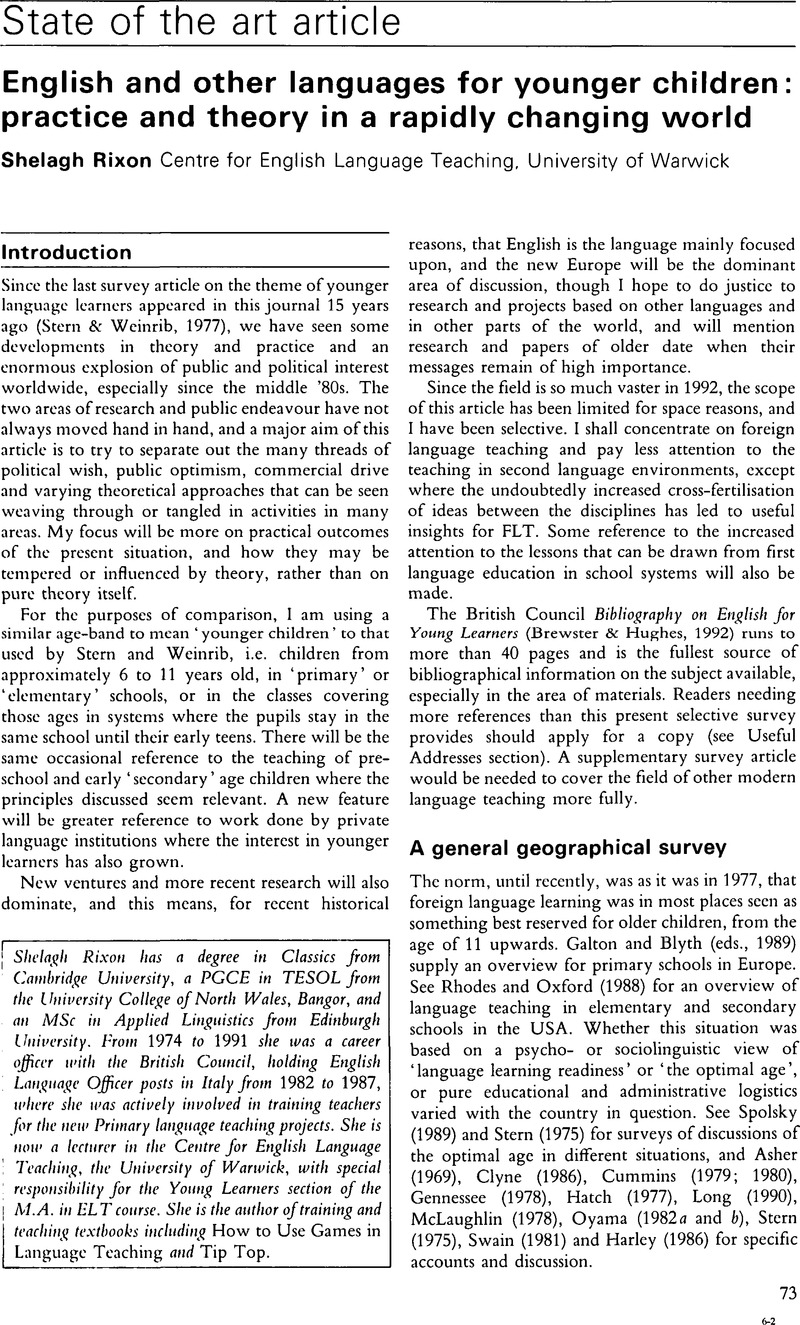Crossref Citations
This article has been cited by the following publications. This list is generated based on data provided by Crossref.
Cenoz, Jasone
and
Lindsay, Diana
1994.
Teaching english in primary school: A project to introduce a third anguage to eight year olds.
Language and Education,
Vol. 8,
Issue. 4,
p.
201.
West, Richard
1994.
Needs analysis in language teaching.
Language Teaching,
Vol. 27,
Issue. 1,
p.
1.
Fulcher, Glenn
1996.
Does thick description lead to smart tests? A data-based approach to rating scale construction.
Language Testing,
Vol. 13,
Issue. 2,
p.
208.
Rea-Dickins, Pauline
and
Rixon, Shelagh
1997.
Encyclopedia of Language and Education.
p.
151.
Kubanek-German, Angelika
1998.
Primary foreign language teaching in Europe – trends and issues.
Language Teaching,
Vol. 31,
Issue. 4,
p.
193.
Sollars, Valerie
and
Pumfrey, Peter D.
1999.
Reciprocal and Transmission Models of Teaching in E2L with Young Learners.
International Journal of Early Years Education,
Vol. 7,
Issue. 2,
p.
141.
Edelenbos, Peter
and
Vinjé, Marja P.
2000.
The assessment of a foreign language at the end of primary (elementary) education.
Language Testing,
Vol. 17,
Issue. 2,
p.
144.
Nikolov, Marianne
and
Djigunovic, Jelena Mihaljevic
2006.
RECENT RESEARCH ON AGE, SECOND LANGUAGE ACQUISITION, AND EARLY FOREIGN LANGUAGE LEARNING.
Annual Review of Applied Linguistics,
Vol. 26,
Issue. ,
Macrory, Gee
and
McLachlan, Angela
2009.
Bringing modern languages into the primary curriculum in England: investigating effective practice in teacher education.
European Journal of Teacher Education,
Vol. 32,
Issue. 3,
p.
259.
Brumen, Mihaela
Cagran, Branka
and
Rixon, Shelagh
2009.
Comparative assessment of young learners’ foreign language competence in three Eastern European countries.
Educational Studies,
Vol. 35,
Issue. 3,
p.
269.
Ottó, István
and
Nikolov, Marianne
2012.
New Perspectives on Individual Differences in Language Learning and Teaching.
p.
33.
Tetiurka, Małgorzata
2016.
Working with Text and Around Text in Foreign Language Environments.
p.
259.
Alkaaf, Fatma
and
Lu, Xiaofei
2017.
Perspectives of learners and teachers on implementing the storytelling strategy as a way to develop story writing skills among middle school students.
Cogent Education,
Vol. 4,
Issue. 1,
p.
1348315.
Rixon, Shelagh
2019.
Second Handbook of English Language Teaching.
p.
1.
Rixon, Shelagh
2019.
Second Handbook of English Language Teaching.
p.
277.



